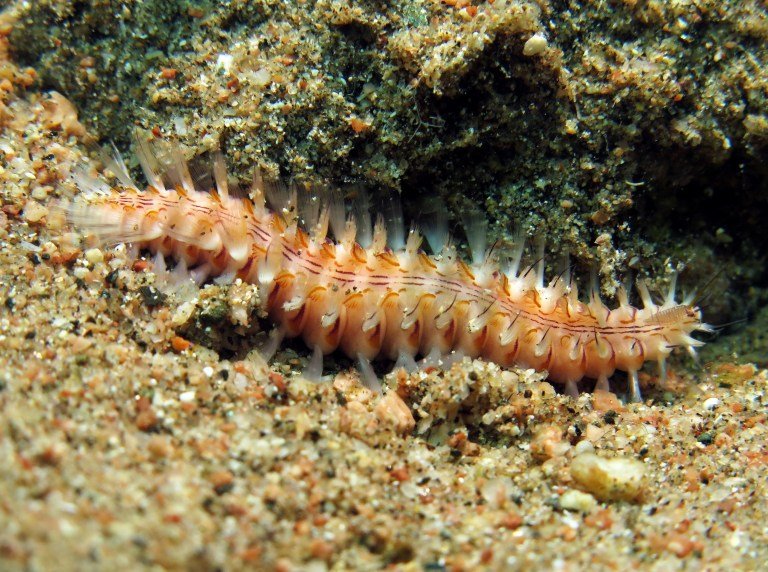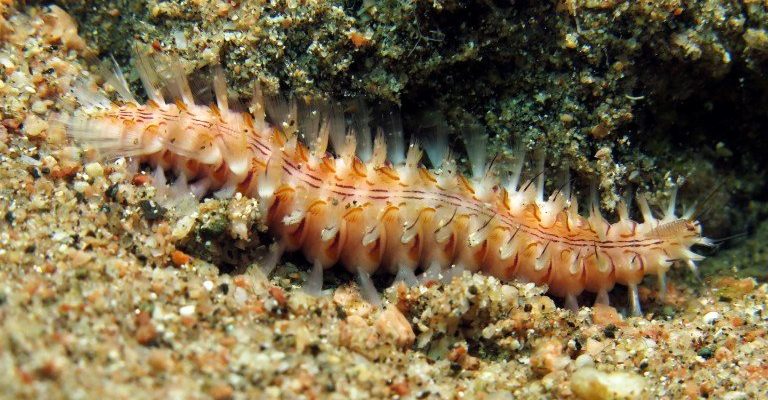
In this article, we’ll explore what bristle worms are, how they interact with live rock and coral, and whether you should be worried about these little guys running amok in your aquarium. Let’s break this down in a friendly, easy-to-understand way, just like sharing tips over a cup of coffee.
What Are Bristle Worms?
Bristle worms are segmented worms that belong to the polychaete class. They typically have bristles all over their bodies, which is where they get their name. You might spot them wriggling around in your aquarium, usually at night. These worms can vary in size and color, making some of them quite striking to look at.
While some bristle worms are harmless scavengers, others can have a bit of a reputation. They primarily feed on detritus, leftover food, and even decaying matter, essentially helping to keep your tank clean. However, their presence can lead to some questions about their impact on live rock and corals.
Do Bristle Worms Eat Coral?
One of the biggest fears among aquarium hobbyists is that bristle worms will munch on coral. Here’s the thing: most bristle worms are not harmful to healthy coral. They tend to stick to their scavenging habits and will usually leave living coral alone. However, if the coral is already stressed or dying, bristle worms might take advantage of the situation, eating the decaying tissue as it becomes available.
– Healthy Corals: If your corals are thriving, bristle worms will likely skip them. Think of it like a buffet—they’re more interested in the easy meal than going after something that’s still alive and well.
– Stressed Corals: If corals are weak or in distress, bristle worms might nibble at them. It’s a natural part of the ecosystem, as they help clean up debris. However, this doesn’t mean they actively seek out healthy corals to damage.
In short, while bristle worms typically aren’t a threat to healthy corals, it’s essential to monitor the overall health of your coral and tank.
How Do Bristle Worms Affect Live Rock?
Live rock is a crucial part of your aquarium’s ecosystem. It provides not only a natural habitat for various marine life but also a vast surface area for beneficial bacteria to grow. So, how do bristle worms fit into this picture?
Bristle worms are often found on and within live rock. They play a role in breaking down organic matter and recycling nutrients, helping to maintain water quality. Their burrowing can also create little channels and tunnels, promoting water flow through your rock structure.
However, you might wonder if their activity can damage the live rock itself. Here are some important points:
– **Beneficial Interaction:** Bristle worms help aerate the rock. Their movement creates spaces for beneficial bacteria, which is essential for maintaining a healthy aquarium.
– **Possible Concerns:** If a bristle worm population grows too large, they could potentially disturb the balance within the rock. In some situations, overpopulation can lead to the deterioration of live rock, but this is rare.
In most cases, bristle worms are doing more good than harm for your live rock. But if you do notice a surplus of them, it might be a sign of excess nutrients in your tank.
Signs of Overpopulation
You might be wondering, “How do I know if I have too many bristle worms?” Here are a few signs to look out for:
– **Visible Clusters:** If you see large groups of bristle worms during the day, that could indicate an overpopulation problem. These creatures are generally nocturnal, so if they’re out in the open, it could mean something is off.
– **Coral Stress:** Keep an eye on your corals. If you notice that they’re looking less vibrant or have areas of tissue loss, it might be time to investigate the bristle worm population further. Healthy corals should be expanding and looking lively.
– **Water Quality Issues:** Overpopulation can lead to higher waste levels, impacting your water quality. If your water parameters start to drift out of range, look into your bristle worm count as a potential factor.
If you suspect you have an overpopulation issue, it’s essential to take action. Regular tank maintenance, including water changes and monitoring feedings, can help keep their numbers in check.
Managing Bristle Worms in Your Aquarium
If you’re dealing with bristle worms but don’t want to eradicate them completely, some effective management techniques can help keep their numbers under control:
1. **Reduce Overfeeding:** Make sure you’re not feeding your fish more than they can eat. Leftover food is like an all-you-can-eat buffet for bristle worms.
2. **Manual Removal:** If you notice a large population, you can gently remove some of them by hand or using a trap. Just be careful when handling them; their bristles can sting if you touch them!
3. **Introduce Predators:** Some fish and invertebrates eat bristle worms. Wrasses and some types of triggerfish are known to help keep their population down.
4. **Regular Maintenance:** Keeping your tank clean and performing regular water changes will help maintain balance and prevent overpopulation. Clean the live rock, remove detritus, and keep an eye on water quality.
By taking these steps, you’ll ensure your aquarium thrives without worry about bristle worms wreaking havoc.
So, can bristle worms damage live rock or corals? In most cases, the answer is no. They play a vital role in your aquarium’s ecosystem by helping to clean up waste and promote healthy bacteria growth. However, it’s essential to keep an eye on their population and the overall health of your coral.
Remember, maintaining a balanced environment is key to your aquarium’s success. If you spot any signs of overpopulation or coral stress, consider the management techniques we’ve discussed. With a little attention, you can certainly enjoy the benefits of bristle worms without worrying about them damaging your tank. Happy fishkeeping!

